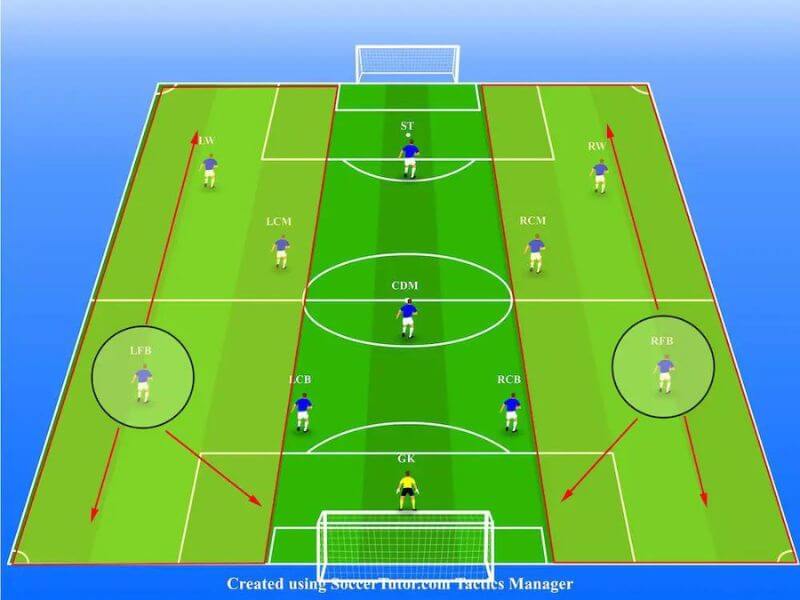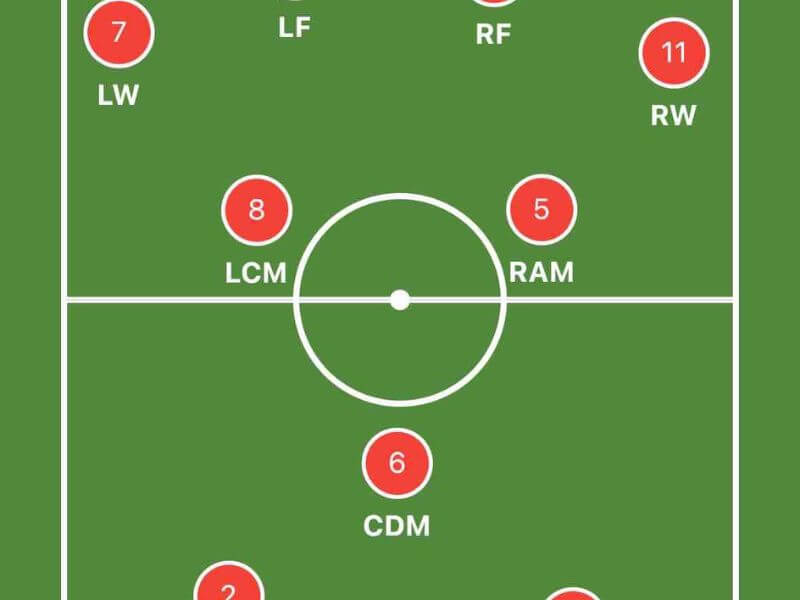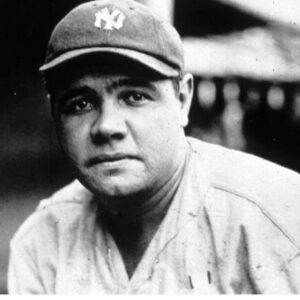What is fullback in soccer ? Teams deploy fullbacks on either end of the backline, operating as wide defenders up and down the entire length of the field.
Once viewed as insignificant players who simply fill in the numbers and perform basic defensive tasks…
The role of a fullback has now evolved enormously.
In fact, fullbacks have arguably grown in importance more than any other position in the past decade.
As well as marking opposition wingers and stopping crosses from wide areas, modern fullbacks must now offer an attacking threat.
Today’s fullbacks are more akin to traditional wingers and require a robust skill set on and off the ball.
Although they’re defenders first, coaches encourage fullbacks to join attacks where possible.
Below we’ll dive into the fullback position, breaking down the key roles, responsibilities, and traits to help you elevate your game.
What is a Fullback in Soccer?
A fullback in soccer is a wide defender who plays on either side of a back four.
There are typically two fullbacks on the field at all times: a right back and a left back.
A fullback’s primary role is to defend their quadrant.
This involves marking the opposition winger, winning defensive duels in wide areas, and preventing crosses.
The secondary defensive responsibility of a fullback is to provide cover when the ball is on the opposite side of the field.
When an opponent attacks down a particular side, the entire backline shifts in that direction, shutting down passing options and increasing protection around the goal area.
The opposite fullback tucks in and is responsible for defending the back post and tracking any late runners into the box.
When their team is in possession, modern fullbacks must also offer an attacking threat.
Their attacking arsenal should contain an eye for a pass, pinpoint crossing, and 1v1 dribbling skills.
It’s important for fullbacks to build relationships with their wingers.
Intricate give-and-go passes as well as overlapping and underlapping runs are staples of top-class wing partnerships.

Position of a Fullback
Fullbacks play mainly along the wings, whether they’re attacking or defending.
Their starting position is either in line or slightly ahead of the center backs in the defensive third of the field.
In the defensive phases, the backline moves as a unit to either (1) drop back and absorb pressure, or (2) step up and press the opposition.
Fullbacks need to tuck in and cover the back post when the ball is on the opposite side, preventing any clear gaps from opening centrally.
In possession, the position of a fullback can vary a lot…
Regardless of how advanced they are up the field, when their team is on the ball, fullbacks tend to hit the sidelines and stay as wide as possible.
This positioning strategy stretches the opponent out as much as possible. Creating space to retain possession, make probing passes, and create chances.
In the build-up phases, fullbacks are likely to drop deep to offer a passing outlet.
But if they don’t receive the ball in this phase, they should position themselves further up the sideline to offer a more attacking threat.
When the ball is on their side, fullbacks must be willing to attack, either directly or by making overlapping and underlapping runs.
What Does a Fullback Do in Soccer?
Combining a vast skill set and bringing both offensive and defensive work to the table, a modern fullback wears a lot of hats.
If you want to learn how to dominate as a fullback in soccer, you must first understand the core responsibilities.
In the next section, I break down exactly what a fullback does in attack and defense, giving you a framework to help you improve.
Fullback’s Role In Defense
1 . Defend Wide Areas
Operating as a key cog in the defensive unit, the fullback’s main focus is to defend their quadrant of the field.
Since the final third is the most dangerous area, fullbacks must have this section locked down.
This means being positionally responsible and making safe choices when it comes to defending.
Although attacking fullbacks are extremely valuable in today’s game, venturing out of secure defensive positions brings about a lot of risks.
Right and left backs must learn when to attack and when to sit alongside their backline.
2 . Win 1v1s
The winger vs fullback duel is always a fun one.
It’s essentially a matchup between the best 1v1 attacker and the best 1v1 defender.
Fullbacks must be able to match their opposing winger’s attacking flair with solid defensive fundamentals.
In general, the most space on a soccer field lies on the wings.
Therefore, wide areas are key for creating chances and establishing solid attacks.
By winning the individual battles on either flank, fullbacks can effectively limit their opponents’ attacking threats.
3 . Cover Crosses from Both Sides
The wings are some of the most fruitful areas for teams to create chances.
One of the most important duties of either fullback is to stem the supply of crosses.
If a cross makes its way into the penalty box, the fullback on the opposite side must ensure they cover the back post and defend any late runners.
Preventing direct crosses successfully comes down to positioning, discipline, and timing.
The defender should be close enough to the winger to block their path to the box but they must not get so tight, leaving the defensive vulnerable if they get beaten 1v1.
One of the golden rules of defending is to avoid diving in, which essentially means not overcommitting to a challenge.
Fullbacks must have a disciplined approach, waiting for the right time to engage the attacker or stick their leg out to block the cross.
Fullback’s Role In Attack
4. Contribute to Build-Up Play
Although the extent to which a fullback contributes to build-up play depends on the individual team’s system…
Right and left backs see A LOT of the ball.
They’re key passing outlets for several important positions, including the goalkeeper, center backs, center midfielders, and wingers.
In many cases, the fullback can keep things simple, making short passes to recycle possession and keep the ball moving.
However, the best fullbacks use their well-rounded skillset to give a little bit more going forward.
Switching the play with crossfield balls, playing line-breaking passes, or advancing into more dangerous positions will make a fullback more threatening in build-up phases.
5. Attack in Tandem with Wingers
Perhaps the most dangerous method of attacking from wide areas is to do so in tandem, with a fullback and winger duo.
Fullbacks and wingers who have a good understanding of each other can put together slick and fluid offensive work.
These duos should know each other’s strengths, weaknesses, and tendencies, ensuring they can complement each other.
Strong partnerships are born from hard work on the training field.
Wingers and fullbacks should practice different sequences, involving overlaps and underlaps, as well as dummy runs and quick give-and-go movements.

6. Supply Crosses
In any given season, approximately a quarter of goals scored come from crosses.
Since modern fullbacks are more attack-minded than ever before, they find themselves in great positions to whip in crosses.
This is where having a robust all-around skill set comes in.
To take full advantage of getting into dangerous areas, fullbacks must have the vision and technique to execute.
They should be capable of delivering different types of crosses, from deep lofted balls to low-driven cutbacks.
5. Key Traits of a Fullback
While players of different sizes and skill sets can be effective in all positions, most fullbacks conform to a more definite archetype.
They’re hard-working, fit, and tenacious defenders with the desire and drive to not only win the individual battle, but to offer an attacking threat too.
With this in mind, let’s take a look at the key traits of a dominant fullback in modern soccer.
What is a fullback in soccer?
In simple terms, the definition of a fullback in soccer is a wide defender who plays on either side of the back four with the primary aim of defending their quadrant. They line up defensively to start the game at the outer edge of the pitch near the touchlines.
Above is information what is fullback in soccer. Hopefully, through the above content, you have a more detailed understanding of what is fullback in soccer .Thank you for reading our post.









